Visit Badi Devkali Devi Temple For A Blissful Retreat

This beautiful temple, situated in the heart of Ayodhya is one with a deep connection to this city and its patron god Ram. It is a focal point of spirituality that combines present-day reality with stories of the divine. Such a crowd can only be drawn due to unwavering devotion and faith in the history and significance of that temple. Ayodhya stands today as one of the most sacred and revered temple towns in our country, but it is temples such as the Badi Devkali Devi Temple that give it such importance.
History Of The Badi Devkali Devi Temple

The Goddess Badi Devkali is recognised as the Kuldevi or Lord Rama’s ancestral deity within the rich tapestry of deeply revered customs. The ancient temple honouring her is tucked away within the lane of the great city of Ayodhya. This temple draws pilgrims worldwide who come to seek the Mother Goddess’s bountiful blessings.
According to age-old mythological beliefs, the genesis of the Badi Devkali Mandir can be traced back to Maharaja Raghunath, an ancestor of Lord Rama. Legend has it that it was under the divine blessings of Badi Devkali that Lord Rama achieved victory in the epic battle against Ravana in Lanka. The temple, thus, becomes not only a place of worship but also a repository of divine blessings that echo through generations. It is also said that Ram’s mother, Kaushalya, had a difficult pregnancy and used to frequently come to this very temple to seek the blessings of the holy mother. It is a place of divine feminine energy that captivates anyone who seeks blessings at the temple.
Must Read: Hotels In Ayodhya
Badi Devkali Mandir: A Pilgrimage Hub
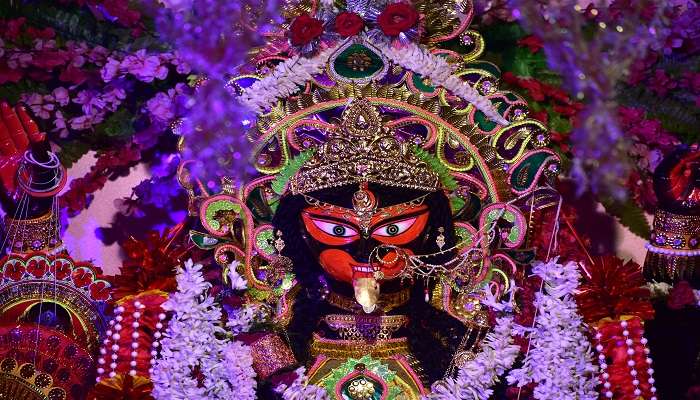
Pilgrims are drawn from distant corners of the world to converge in Ayodhya to witness the divine aura of Mother Badi Devkali. The temple resonates with the very essence of Ayodhya’s spiritual ambience and embodies the divine connection that Lord Rama shared with his Kuldevi. Pilgrimage to this sacred site has become a journey of both spiritual discovery and familial homage that many people traverse throughout the year. The goddesses Mahakali, Mahalakshmi, and Mahasaraswati are the forms that the holy presence takes on within the sanctum sanctorum of the Badi Devkali Mandir. It is said that Maharaja Raghunath, who was an ancestor of Lord Ram, conducted devotional ceremonies honouring all three forms, continuing a holy custom that is revered even now. The temple is thereby transformed into a hallowed place where followers of the divine feminine energy can establish a connection and ask for benefits related to wealth, wisdom, and spiritual health.
At the sacred time of Navratri, the Badi Devkali Mandir becomes a hub of boisterous festivities. Elaborate preparations are made, and Lord Rama is given a magnificent court. Devotees flood the temple to see the heavenly darbar, giving Ayodhya an even more spiritually charged atmosphere. The Navratri celebrations have developed into a cultural spectacle representing the victory of good over evil and embodying the spirit of joy and dedication. Today you are also allowed to rent a boat to the middle of the Sarayu to get a panoramic view of these celebrations from the middle of the river. The Badi Devkali Mandir is an architectural wonder because of its unusual layout, which places the temple below ground. Devotees perceive this symbolic portrayal as a highly profound and immersive spiritual connection between Mother Goddess and Lord Ram. The temple’s architecture emphasises the heavenly bond between Lord Ram and The Goddess Badi Devkali while also showcasing exquisite workmanship and acting as a symbol for the spiritual order.
Places To Visit Around The Badi Devkali Devi Temple
There are tons of places to visit around the Badi Devkali Devi temple. Here are some of the best places to see around:
1. Tulsi Udyan Garden
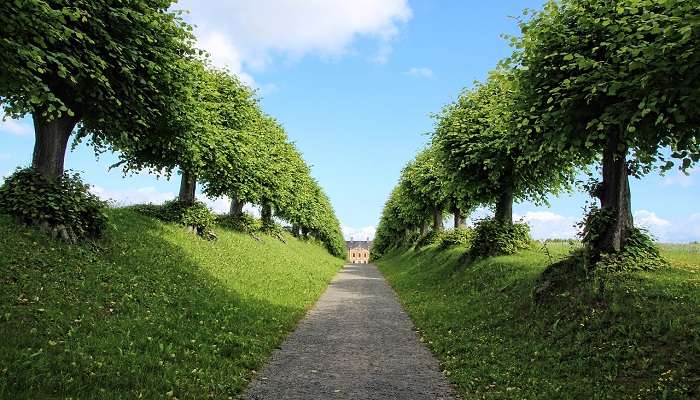
A garden called Tulsi Udyan is devoted to the saint Goswami Tulsidas Ji. Tulsi Udyan is situated next to the former bus stop in the main town of Ayodhya on Ayodhya-Faizabad Avenue. As the name suggests, Tulsi Udyan is a garden park. It is currently an installation honouring the renowned saint-poet Tulsi Das, who wrote the Epic RamcharitManas, often called the Ramayana, and was a devotee of the saint. In the garden, the statue of Tulsi Das has also been placed beneath an exquisitely carved canopy. The Queen Victoria statue, which was once known as Victoria Park, was once located in this area. It was thereafter given the name Goswami Tulsidas in honour of the Ramayana’s author. Following her adoption as Tulsi Udyan, an idol of Tulsidas, was erected in the park in 1960.
Best Time To Visit: September to March
Timing: Everyday 9 AM – 6 PM
Suggested Read: Guptar Hotel
2. Kanak Bhawan
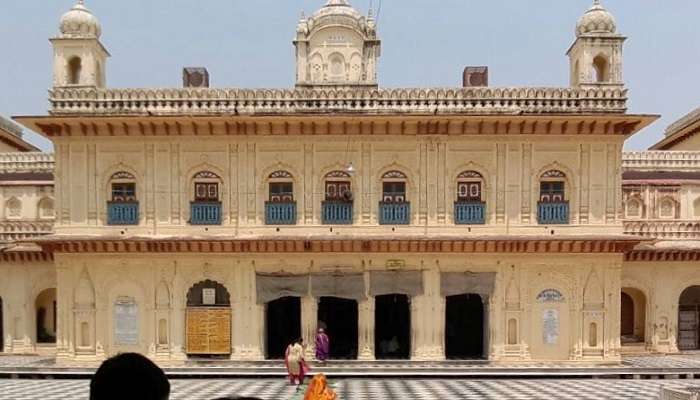
Located northeast of Ramkot in Ram Janmabhoomi, Ayodhya is a temple called Kanak Bhawan. It is among Ayodhya’s most well-known temples. It is thought that this palace was given to them as a special gift by Kaikeyi soon after Ram and Sita were married. The folklore states that during the Dwapar Yuga, Krishna personally renovated Kanak Bhawan after it sustained damage. It is said that Vikramaditya restored it during the Middle Ages. Queen Vrishabhanu Kunwari later restored it, giving the palace its current appearance. The primary idols erected result from this palace being transformed into a temple dedicated to Lord Ram and his wife Sita.
Best Time To Visit: All year round
Timing: Everyday
3. Dashrath Mahal Ayodhya
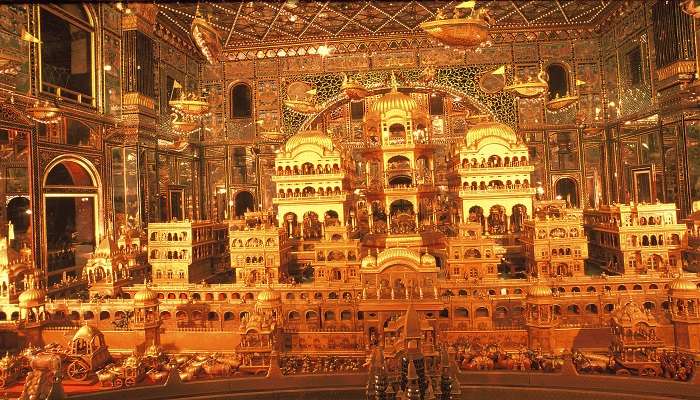
Dashrath Mahal Ayodhya is a building with a long history. It is located in the centre of the spiritually and historically rich city of Ayodhya. King Dashrath, the esteemed monarch of Ayodhya and the father of Lord Sri Ram, originally called this splendid castle Bada Asthan or Badi Jagah. This magical location, which is where King Dasharatha’s palace formerly stood, is extremely important to Lord Rama and his siblings. It is thought that these sacred walls are where Lord Rama spent his early and adolescent years. You will be enthralled with the palace’s elaborate entryway, which is decorated with detailed paintings, as you explore it. Inside, monks dressed in saffron recite mantras, sing songs of devotion, and dance in joy. Dashrath Mahal may be smaller in scale than some grand palaces, but it holds an undeniable charm that draws visitors from far and wide.
Best Time To Visit: All year round
Timing: 10 AM – 7 PM
Further Read: Places To Visit In Uttar Pradesh
The Badi Devkali Devi Temple is a timeless testament to Ayodhya’s spiritual tapestry. The ancient temple stands as a living bond between Lord Ram and his Kuldevi. Devotees are invited to immerse themselves in the divine journey, experiencing the sacred narrative that unfolds within its hallowed walls. So do keep these places and facts in mind when planning your trip to Uttar Pradesh.
For our editorial codes of conduct and copyright disclaimer, please click here.
Cover Image Credit: Alberto Buscató Vázquez for Wikimedia Commons
Frequently Asked Questions About Badi Devkali Devi Temple
Was prince Rama born in the Badi Devkali Devi temple?
No, but according to legend, his mother Kaushalya was going through a very hard pregnancy when she visited this very temple to seek the blessings of its patron goddess. And even after the birth of her son Ram, she used to bring him to the temple regularly to pray.
Is the Badi Devkali Devi an incarnation of Maa Kali?
No, the Badi Devkali Mandir, the divine presence manifests in the forms of Goddess Mahakali, Mahalakshmi, and Mahasaraswati. Legend has it that Maharaja Raghunath performed worship rituals dedicated to all three forms, a sacred tradition upheld to this very day.
How to get to Ayodhya by Air?
Lucknow International Airport is the nearest Airport which is 152 Kms from Ayodhya. Ayodhya is about 158 Km from Gorakhpur Airport and 224 Km from Varanasi Airport.
How to reach the Badi Devkali Devi Temple?
Faizabad and Ayodhya are major railway stations of the district and are well-connected to almost all major cities and towns. Lucknow International Airport is the nearest Airport which is 152 Kms from Ayodhya. Once at these locations, you can hail a cab to the temple.
Is this place spiritually significant?
Yes, this place has mythological significance from Hindu scriptures.
People Also Read:
Shree Dwarkadhish Temple Kalachakra Temple Kathiya Temple
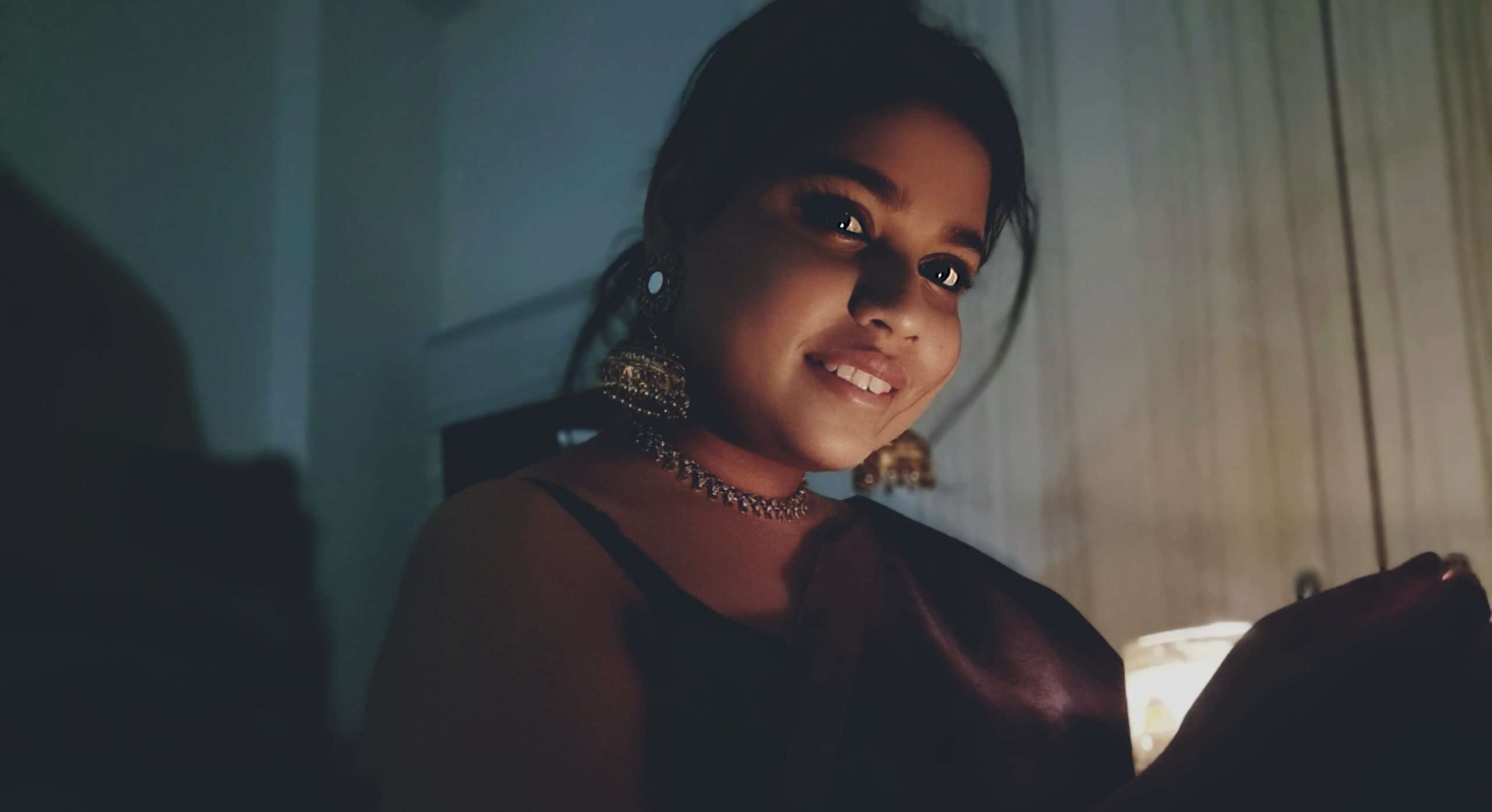
As a Travel Content Writer, I live to conquer the world of globetrotting with words. With my unquenchable thirst for storytelling, I believe that my words will inspire you to travel around the world’s breathtaking landscapes. As for me, I am an unapologetic selenophile, who loves to wander around in a starry night!











